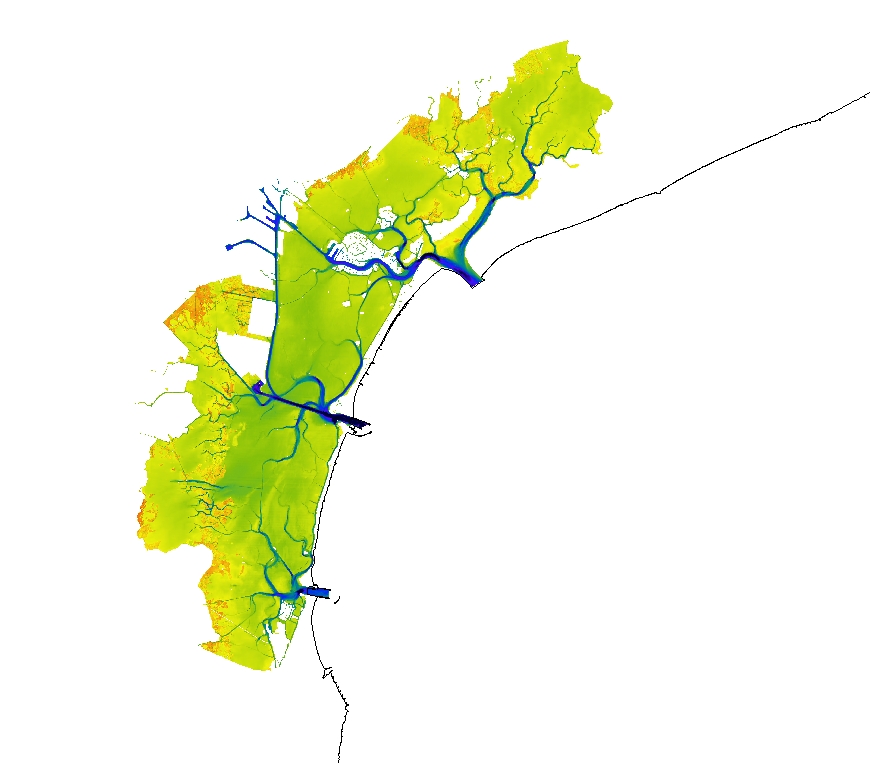Deltares
Type of resources
Available actions
Topics
Keywords
Contact for the resource
Provided by
Years
Formats
Representation types
status
Service types
Scale 1:
Resolution
-
The use of ballast water is increasingly subjected to regulations because they are vectors for the spreading of invasive species. OSPAR and HELCOM have been working on a decision support tool and a harbour database to reduce unnecessary ballast water checks. In this analysis, we explore what EMODNET could offer to the efforts devoted to this decision support tool. This workflow demonstrates the use of the EMODnet Biology/EurOBIS database as a tool to check for false negatives in the harbour dataset. This is a workflow, rather than an end product. We hope that the workflow, documented at code level in this product, can be taken up and further extended by the authorities responsible for invasive species management.
-
This data product is an R Shiny application that discloses the data collected by the National Institute of Oceanography and Experimental Geophysics (OGS) in the North Adriatic-Gulf of Trieste LTER. A time series has been built of observations on the species composition of the plankton. The application shows the evolution over time of abundance of major groups of species, as well as the most frequent species (or other taxonomic units) in the dataset. There is also a multivariate representation based on a PCA of abundances of the most frequent species, which shows the seasonal (monthly) fluctuations and the long-term (yearly) trend, and the contribution of each individual species to the temporal evolution of the community.
-
<p>MILZON-Benthos. In 1987-1989 the MILZON-Benthos (Milieuzonering) project did research on the spatial distribution of benthic animals (macro- en meiobenthos) on the Dutch Continental Plat (NCP).</p>
-
-
This data product is an R Shiny application that discloses the data collected by the Institute of Oceanography and Fisheries (IZOR) in Croatia, in the Middle Adriatic (Skejic et al., 2015). A time series has been built of observations on the species composition of the plankton. The application shows the evolution over time of abundance of major groups of species, as well as the most frequent species (or other taxonomic units) in the dataset. There is also a multivariate representation based on a PCA of abundances of the most frequent species, which shows the seasonal (monthly) fluctuations and the long-term (yearly) trend, and the contribution of each individual species to the temporal evolution of the community.
-
This product is a workflow and an example of how data from EMODnet Biology can be verified, checked and used for time series analyses in R. All zooplankton data from the Villefranche permanent zooplankton station were selected and analysed.
-
The project aims to produce comprehensive data product of the occurence and absence of (phyto)plankton species. As a basis, data from EMODnet Biology are used. The selection of relevant datasets is optimized in order to find all planktonic species, and exclude all species that are not planktonic. The occurences from EMODnet Biology were complemenented with absence data assuming fixed species lists within each dataset and year. The products are presented as maps of the distribution of the 100 most common species of (phyto)plankton in the Greater North Sea. This product then is also used for interpolated maps, using the DIVA software.
-

Satellite-derived bathymetry for the Venice Lagoon
-
This data product is a series of probability of occurrence maps for 200 phytoplankton species from 1995 to 2015 in the Greater North Sea, based on a neural network analysis. The input data files have been produced by Deltares (Luuk van der Heijden, Willem Stolte). They used EMODnet-Biology data as a basis. The selection of relevant datasets was optimized in order to find all planktonic species, and exclude all species that are not planktonic. The occurences from EMODnet Biology were complemented with absence data assuming fixed species lists within each dataset and year. In addition to the occurrence data, the environmental variables bathymetry, silicate, phosphate and nitrate concentrations were used. Additionally the position (latitude and longitude) and the year are provided to the neural network. DIVAnd (n-dimensional Data-Interpolating Variational Analysis) and the neural network library Knet were used in this analysis.
-
This data product is a series of gridded abundance maps for 40 zooplankton species from 2007 to 2013 in the Baltic Sea, based on a neural network analysis. As input data a combination of EMODnet Biology datasets were used, together with the environmental variables dissolved oxygen, salinity, temperature, chlorophyll concentration bathymetry and the distance from coast. Additionally the position (latitude and longitude) and the year are provided to the neural network. DIVAnd (n-dimensional Data-Interpolating Variational Analysis) and the neural network library Knet were used in this analysis.
 EMODnet Product Catalogue
EMODnet Product Catalogue